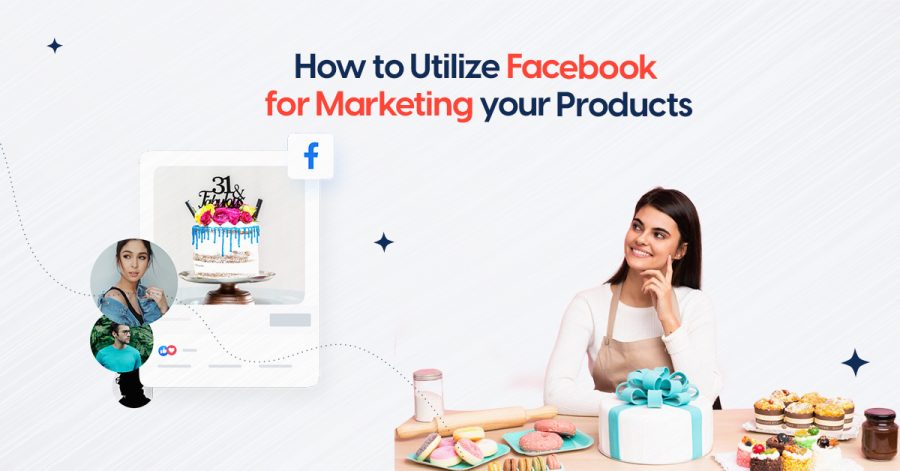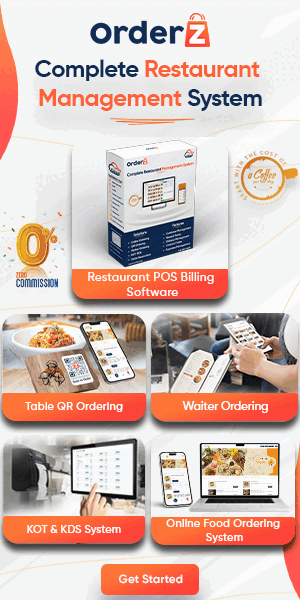How to utilize Facebook for marketing your products?
With more than 2.7 billion monthly active members as of 2021, Facebook is one of the biggest and most well-known social media networks. Facebook is an effective marketing tool for businesses of all sizes because of its targeting tools that help them contact their target audience.
The purpose of the blog “How to Utilize Facebook for Marketing Your Products” is to educate businesses and entrepreneurs on how to effectively use Facebook as a marketing platform to promote their products and reach their target audience. The blog aims to provide a comprehensive guide, covering various aspects of Facebook marketing, including
- Setting up a business page,
- Creating engaging content,
- Utilizing Facebook ads,
- Measuring and optimizing results.
The ultimate goal of the blog is to help businesses effectively leverage Facebook to achieve their marketing goals and drive growth for their products.
-
Setting up a business page

A Facebook business page is a great way to connect with and interact with customers online.
Benefits of having a business page:

- Utilizing this powerful platform, you can exponentially increase your visibility and reach a vast audience.
- Your page provides you with the tools you need to quickly test and experiment with new branded content and message.
- A Facebook page provides low-cost brand exposure.
- With this business page, you can gain valuable insights into the behaviours and interests of your target audience.
- You can build brand loyalty by using a Facebook business page.
- Boost your SEO by creating a Facebook business page.
- With a business page, you can quickly and easily target potential clients who are using their phones to browse Facebook.
- Creating a Facebook business page will enable you to host and earn revenue from paid events.
How to create a business page:

- Log in to Facebook and go to the “Create” dropdown menu.
- Select “Page”.
- Choose the type of page you want to create: “Business or Brand” or “Community or Public Figure”.
- Fill in the required information, including your page name, category, and profile picture.
- Click “Continue”.
- Fill in the additional information for your page, including a description, contact information, and website.
- Publish your page.
- Start posting updates, pictures, and other content to your page to engage with your audience and promote your brand.
- Use Facebook Insights to monitor the performance of your page and make data-driven decisions about your content and strategy.
Consider using Facebook advertising to reach a wider audience and drive more traffic to your page.
Essential elements of a business page:
- Profile picture and cover photo:
These visual elements should accurately represent your brand and be high-quality.
- About section:
This should provide a clear and concise description of your business. It should include information such as your mission statement, products, and services offered.
- Contact information:
Ensure that your page includes up-to-date contact information, such as your business address, phone number, and email address.
- Posts:
Regularly post updates, promotions, and other relevant content to engage with your audience. Keep them informed about your business.
- Call-to-Action (CTA) button:
Utilize the CTA button on your page to drive specific actions, such as visiting your website, making a purchase, or signing up for a newsletter.
- Engagement:
Encourage engagement from your followers by responding to comments and messages on time. Ask questions and start conversations.
- Consistency:
Maintain consistency in the tone and voice of your content, as well as the visual elements of your page, to ensure that your brand is accurately represented.
- Analytics:
Use Facebook Insights to monitor the performance of your page. Make data-driven decisions about your content and strategy.
-
Creating Engaging Content
Creating engaging content is crucial for any business or individual looking to connect with their audience and drive meaningful interactions on their platform.
Types of content to post:
There are several types of content that businesses can post on Facebook to engage with their audience and promote their brand. These include:
- Industry news and updates.
- Behind-the-scenes content.
- Product updates and promotions.
- User-generated content.
- Interactive content.
- Live videos.
- Customer testimonials.
- Infographics and visual content.
Best practices for creating engaging content :
Here are some best practices for creating engaging content on Facebook:
- Understanding your audience’s interests, demographics, and behaviour will help you create content that resonates with them. By crafting content specifically tailored to the needs of your audience, you will be able to increase engagement and reach more people.
- Facebook is a visual platform, so incorporating high-quality images or videos will make your content more engaging. Make sure to use visuals that are relevant to the content; this will draw more attention to your post and help to increase engagement.
- Attention spans are short on social media, so keep your posts brief and to the point. Additionally, use bold text and font variations to further emphasize the critical parts of the message.
- Encourage users to like, comment, and share your posts by posing questions or posing a call to action. Also, make sure to emphasize the most critical points of the message by using bold text and font variations. Invite audience engagement by asking questions or issuing a call to action, so that users can like, comment, and share your posts.
- Utilize features such as Facebook Live, Stories, and Reels to create interactive and engaging content. Highlight the value of audience participation by offering incentives, such as limited-time discounts or exclusive offers, to encourage users to engage with your posts. Additionally, leverage relevant hashtags and collaborate with other brands to expand your reach.
- Post when your audience is most active to maximize engagement and reach. For example, post during the lunch hour or early in the morning to reach people who check their phones first thing.
- Use Facebook Insights to track the performance of your content and make data-driven decisions. Monitor the engagement and reactions to your post to see what resonates with your audience and adjust your content strategy accordingly.
- Authenticity is key to building trust and engagement with your audience. Be true to your brand and genuinely communicate with your audience. Show them you care: Listen to feedback, respond to questions and concerns, and make sure your audience knows you value their input.
-
Utilizing Facebook Ads
Facebook Ads is a highly effective advertising platform that businesses can use to reach their target audience and achieve their marketing goals.
Benefits of using Facebook Ads:

- It is cost-effective and allows you to quickly track and adjust your ad performance to maximize ROI.
- It is an effective way to reach new customers and increase brand awareness.
- Facebook advertising can increase your SEO rankings.
- It offers up-to-date insights and targeting capabilities for marketers.
Different types of Facebook Ads:

- Image Ads: Simple advertisements that consist of a single image or a slideshow of images.
- Video Ads: Advertisements that use video content to tell a story or convey a message.
- Carousel Ads: Ads that allow advertisers to showcase multiple images or videos within a single ad unit.
- Collection Ads: Interactive advertisements that allow users to browse products, view more information, and purchase without leaving the Facebook app.
- Slideshow Ads: Advertisements that use a series of images to create a short video-like experience.
- Instant Experience Ads: Full-screen, interactive ads that load quickly and allow users to interact with content without leaving the Facebook app.
- Lead Ads: Advertisements designed to capture user information, such as email addresses or phone numbers, through a lead form.
- Marketplace Ads: Advertisements that appear in the Facebook Marketplace, where people can buy and sell items.
- Story Ads: Advertisements that appear in the Stories section of the Facebook app.
- Dynamic Ads: Advertisements that use machine learning to show the most relevant products or services to a target audience based on their past actions on Facebook.
Best practices for creating and running Facebook Ads:

Here are some best practices for creating and running effective Facebook Ads:
- Define your target audience.
- Choose the right ad format.
- Use eye-catching visuals.
- Write compelling ad copy.
- Set a clear call-to-action (CTA) – such as “Learn More” or “Sign Up.”
- A/B test your ads.
- Monitor your ad’s performance.
- Optimize for conversion.
- Follow Facebook’s advertising policies.
- Keep it relevant.
4. Measuring and Optimizing Results
Measuring and optimizing results on Facebook is crucial for maximizing the effectiveness of your marketing efforts and achieving your desired outcomes
Importance of tracking and measuring results
Tracking and measuring results for Facebook marketing is critical for several reasons:
-
Improves Decision-Making:
By tracking and measuring results, you can gain a better understanding of what is working and what is not. This information can be used to make data-driven decisions about your Facebook marketing strategy. This can lead to more effective use of your marketing budget and increased success in targeting the right audience.
-
Increase ROI:
By measuring results, you can determine the return on investment (ROI) of your Facebook marketing efforts. This information can help you make informed decisions about where to allocate your budget and resources. You can use ROI data to maximize your marketing spending, ensuring that you are making the most of your resources and getting the biggest bang for your buck.
-
Helps Identify Opportunities:

Tracking and measuring results can reveal new opportunities for growth and improvement. For example, if you notice that a particular type of content is performing well, you can create more of that type of content to engage your audience. You can use this data to develop a better understanding of your target audience. This helps to identify areas where you can create more effective content and capitalize on new opportunities.
-
Provides Insights for Future Planning:
By tracking and measuring results over time, you can identify trends and patterns that can inform your future planning. This information can be used to refine your Facebook marketing strategy to achieve better results.
Key metrics to track:

Several key metrics can be tracked in Facebook Business to measure the success of your marketing efforts. Here are some of the most important metrics:
- Reach
- Engagement
- Impressions.
- Click-Through Rate (CTR).
- Conversion Rate.
- Video Views.
Final thought :

Facebook is a powerful tool for marketing your products and reaching a large audience. Create an online store with our orderz online store builder and promote your online store on the Facebook marketplace to drive more customers.
The key to utilizing Facebook for marketing your products is to have a clear strategy, understand your audience, create compelling content, and track and measure your results. With these best practices in mind, you can effectively reach and engage with your target audience and drive growth for your business.






